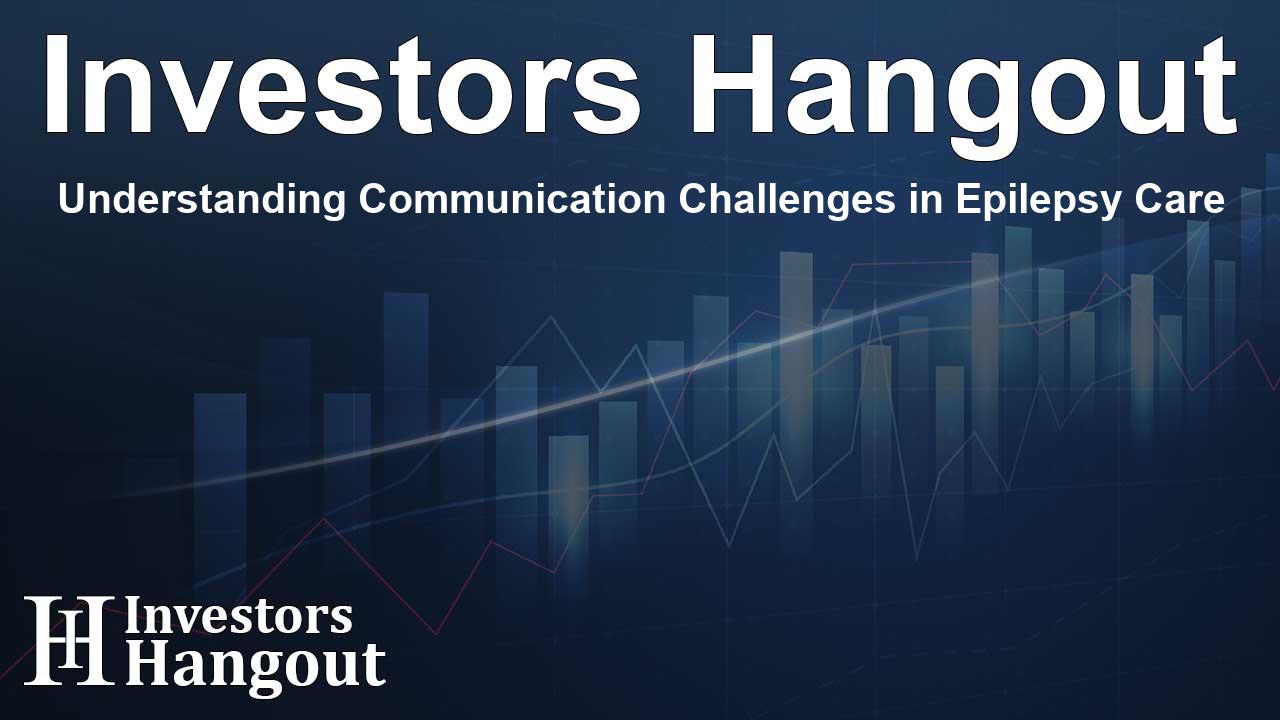Understanding Communication Challenges in Epilepsy Care

Communication Gaps Affecting Epilepsy Care
Nearly three out of every four patients struggle to report all their seizures to their doctors, raising concerns about treatment decisions and life-saving conversations. As we recognize the importance of effective communication within healthcare settings, a recent survey from SK Life Science, Inc. sheds light on the disconnect between patients and their healthcare providers.
Recent Survey Highlights
The survey titled Hope, Hesitancy, and Hard Truths: A Patient and Provider Perspective on Epilepsy Treatment was conducted by Wakefield Research, involving 500 patients and 450 healthcare providers including neurologists and advanced practice providers. Its results reveal significant discrepancies in understanding and managing epilepsy treatment.
Patient-Provider Discrepancies
One of the most alarming findings indicates that while 63% of doctors believe patients can realistically achieve a 75-100% reduction in seizures, a staggering 78% of patients doubt they will ever be seizure-free. This disconnect underscores the necessity for more robust communication and shared understanding of treatment goals.
Challenges in Treatment Switching
The survey also highlighted complex dynamics during discussions about switching medications. While nearly 90% of patients expressed a willingness to inquire about alternative treatments for better seizure control, 88% of healthcare providers reported facing resistance from patients or their families. Concerns usually stem from fears associated with side effects, costs, and uncertainty regarding the efficacy of new medications.
Understanding Seizure Reporting
Alarmingly, approximately 72% of patients admitted that they do not inform their doctors about every seizure they experience. Many expressed concerns about losing their independence or doubted whether their seizures were significant enough to warrant discussion. This lack of openness can hinder effective treatment and lead to suboptimal outcomes.
Conversations About SUDEP
Furthermore, discussions surrounding Sudden Unexpected Death in Epilepsy (SUDEP) are often inconsistent. Although 88% of doctors claim to have addressed this crucial topic, only 63% of patients remember engaging in such discussions with their providers. Alarmingly, almost 20% of patients experiencing daily seizures were not even aware of SUDEP, which highlights the need for increased awareness and education around this serious risk.
Addressing the Care Gap
These findings stress that epilepsy care must extend beyond mere medication management. Dr. Pavel Klein emphasizes that fostering ongoing communication, trust, and shared decision-making is pivotal in enhancing treatment efficacy and safety.
Epilepsy, known as the fourth most prevalent neurological disorder, affects approximately 3.4 million individuals in the U.S. alone. Notably, this disorder is characterized by recurrent seizures and can severely disrupt various aspects of daily life, from safety to social relationships. Despite the presence of effective therapeutic solutions, about one-third of patients face continued uncontrolled seizure episodes.
Commitment to Improved Outcomes
SK Life Science, Inc. is dedicated to advancing outcomes for individuals living with epilepsy. Dr. Sunita Misra highlights the company's resolve in bridging existing communication challenges, thereby empowering patients and enhancing treatment discussions. By acknowledging and addressing these gaps, they aim to provide support that fosters improved health decisions and ultimately brings hope to the epilepsy community.
Conclusion
In summary, the insights provided by this survey reveal a pressing need for better communication between patients and healthcare providers. By focusing on these areas, the healthcare system can move towards closing existing gaps, reducing stigma, and improving outcomes for millions of individuals affected by epilepsy.
Frequently Asked Questions
1. What are the main findings of the SK Life Science survey?
The survey revealed significant communication gaps between epilepsy patients and their providers, including discrepancies in seizure reporting and treatment discussions.
2. Why do patients fail to report all seizures?
Patients often worry about losing independence or don’t believe their seizures are significant enough to report to healthcare providers.
3. How does this survey impact future epilepsy care?
The findings stress the importance of enhanced communication, which can lead to more effective and informed treatment decisions for patients.
4. What is SUDEP and why is it significant?
Sudden Unexpected Death in Epilepsy (SUDEP) is a serious risk for people with uncontrolled seizures, highlighting the need for thorough patient-provider discussions.
5. What role does SK Life Science play in epilepsy treatment?
SK Life Science focuses on improving outcomes for epilepsy patients through better communication and effective treatment strategies.
About The Author
Contact Evelyn Baker privately here. Or send an email with ATTN: Evelyn Baker as the subject to contact@investorshangout.com.
About Investors Hangout
Investors Hangout is a leading online stock forum for financial discussion and learning, offering a wide range of free tools and resources. It draws in traders of all levels, who exchange market knowledge, investigate trading tactics, and keep an eye on industry developments in real time. Featuring financial articles, stock message boards, quotes, charts, company profiles, and live news updates. Through cooperative learning and a wealth of informational resources, it helps users from novices creating their first portfolios to experts honing their techniques. Join Investors Hangout today: https://investorshangout.com/
The content of this article is based on factual, publicly available information and does not represent legal, financial, or investment advice. Investors Hangout does not offer financial advice, and the author is not a licensed financial advisor. Consult a qualified advisor before making any financial or investment decisions based on this article. This article should not be considered advice to purchase, sell, or hold any securities or other investments. If any of the material provided here is inaccurate, please contact us for corrections.
